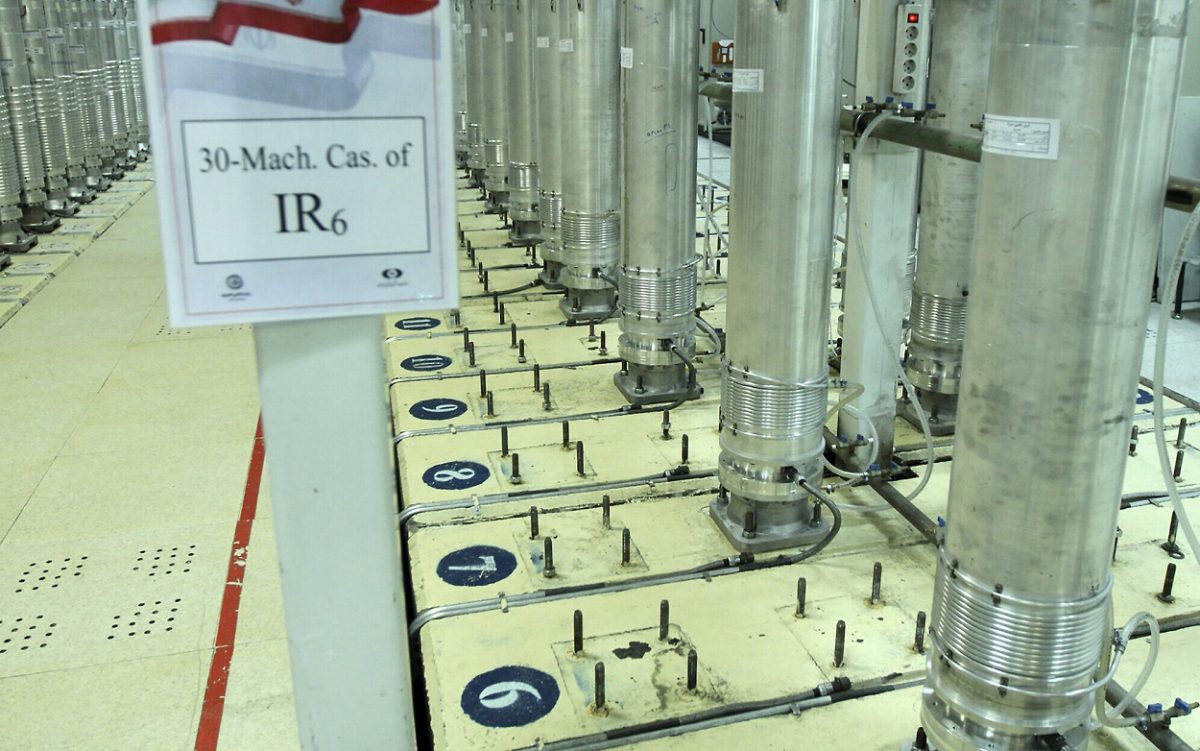“Compared to the restrictions that had been created for us in the negotiations and in the JCPOA, and while they imagined we would be having two middle cascades of 20 to 30 IR-6 centrifuges from year eight, we managed to go past 1,000 devices within a year and advanced well beyond what they imagined,” he told ISNA in an interview published on Wednesday.
He was using an acronym for the Joint Comprehensive Plan of Action (JCPOA), the official name of the 2015 Iran nuclear deal.
About keeping the IR-6 centrifuges in the event of a return to the JCPOA, especially since Iran is way ahead of the JCPOA in that regard, he said, “For us, what matters is the enrichment process and its quantitative targeting… that it takes place for research reactors and for power and for the… targets that have been set in the radiation and accelerator processes.”
IR-6 centrifuges, Iran’s most advanced model, can enrich uranium to at least 60% purity.
He further elaborated on the AEOI’s performance over the past year, saying Iran’s nuclear authority had on agenda an increase in the uranium enrichment capacity using efficient IR-6 centrifuges as well as the purity level.
“We managed to enforce certain reforms in the processes related to enrichment and to prepare the use of enriched material for practical purposes other than producing fuel or stockpiling, like the 20-percent enrichment, which is used for the Tehran reactor fuel,” he said.
“But completing, continuing, and producing the 60-percent target, which few countries in the world have done, was advanced research work to enable us to effectively use targets to produce radiopharmaceuticals.”
‘Iran deal to see no re-implementation day unless IAEA drops claims’
Elsami warned that there would be no “re-implementation day” for the 2015 nuclear deal, despite the diplomatic efforts being made to restore the multilateral accord, if the International Atomic Energy Agency (IAEA) fails to drop its baseless claims against Tehran’s nuclear work.
He said the IAEA’s demands from Iran had no basis under the Safeguards agreement between the two sides and were part of the so-called possible military dimension (PMD) dossier, which had been closed under the 2015 nuclear agreement.
Rafael Grossi, the IAEA chief, in August called on Iran again to explain why traces of enriched uranium were found at previously undeclared nuclear research sites three years ago.
Grossi said, “Give us the necessary answers, people and places so we can clarify the many things needed for clarification.”
Eslami once again rejected the IAEA’s claims and what the Agency called “evidence” against three sites in question in Iran and reaffirmed that the Islamic Republic had no secret nuclear sites.
“What we wrote down is definitive,” he said, referring to Iran’s comments on an EU-drafted text aimed at restoring the Iran deal.
“Our goal and emphasis is that there will be no re-implementation day for [the Iran deal] if [the case] of these questions are not closed. We have not and cannot back down. We cannot sit back and [let them] impose sanctions on the Iranian people for delusional reasons,” he added.
‘Timetable in 2015 deal criterion for return to nuclear deal’
Elsewhere, he was asked to explain what will happen to the mutual commitments of Iran and its JCPOA partners, which have different time frames, in case the two sides agree to revive the accord.
“The dates stipulated in the JCPOA are Adoption Day, Day Zero, and Implementation Day. No matter how much time has passed from them, the criterion is the same dates. What Iran has been constantly emphasizing in the process of the negotiations is that the same time table envisaged in the 2015 JCPOA should remain and be the criterion,” he replied.
‘Iran won’t dispose of old-generation centrifuges’
The nuclear chief also spoke about a previously announced plan to replace the old-generation IR-1 centrifuges with IR-6 models and said the country will not dispose of any of the old machines that it retires
“Each of them has a benefit and it’s not true that they are useless. Each of them can be put to use at its own appropriate place and we will not at all lose them,” Eslami added.
